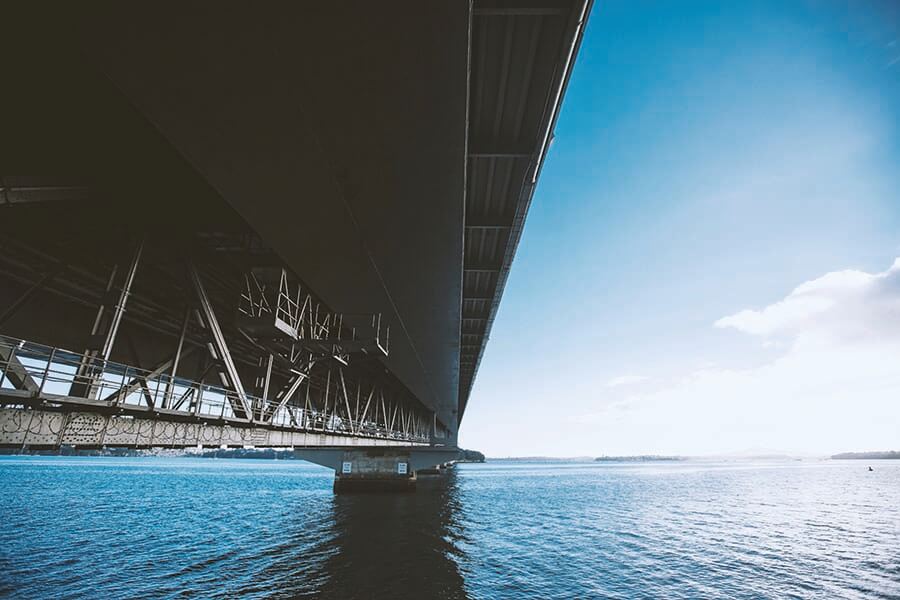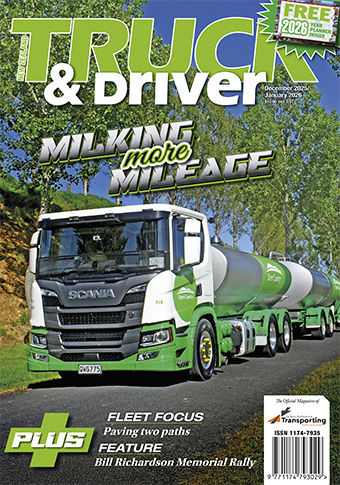Ia Ara Aotearoa Transporting New Zealand News


Upgrade Programme a frustrating downgrade
Incredibly disappointed is the only way to describe how I feel about the Government’s recent announcement on the fate of roading projects in the
New Zealand Upgrade Programme.
Firstly, the good news is that the 24 kilometre highway from Otaki to north of Levin, costing around $817million, will be built as planned. Wellington’s Melling Interchange will also go ahead at a higher cost – now estimated at $420m, having been costed at $258m just a year ago.
The bad news from a road transport point of view is that the Mill Road project in Auckland will not go ahead – due to reprioritisation and concern over future transport emissions.
This again proves the Government has little confidence in its ability to decarbonise the private vehicle fleet and has no real understanding of how suburban NZers live their lives.
...Incredibly disappointed is the only way to describe how I feel about the Government’s recent announcement on the fate of roading projects in the
New Zealand Upgrade Programme.
Firstly, the good news is that the 24 kilometre highway from Otaki to north of Levin, costing around $817million, will be built as planned. Wellington’s Melling Interchange will also go ahead at a higher cost – now estimated at $420m, having been costed at $258m just a year ago.
The bad news from a road transport point of view is that the Mill Road project in Auckland will not go ahead – due to reprioritisation and concern over future transport emissions.
This again proves the Government has little confidence in its ability to decarbonise the private vehicle fleet and has no real understanding of how suburban NZers live their lives.
Like the rest of the country, I was also disappointed to see more than $700m tagged for a new walking and cycling bridge across Auckland Harbour. RTF believes such a huge spend should go towards a new harbour crossing, where buses, trains and trucks are prioritised, and that we should use lanes on the existing bridge for cycling and walking.
Many cycling campaigners are also unconvinced about the merits of the new bridge, with one suggesting using the western-most lane of the existing bridge for walking and cycling as a trial before any money is committed.
This cycling bridge has resulted in a vigorous debate over what the Government is actually trying to achieve. Yes, climate change means we all need to change our behaviour and reduce our reliance on single-occupancy vehicle use.
However, driving a wedge between cyclists/walkers and motorists is not the way to do it. Our roads need to be improved so more efficient vehicles can transport greater volumes of goods in fewer movements, and more efficient transport routes need to be created, whether these involve road or rail, or a mix of both.
The logistics sector needs longterm assurances and a real plan for freight movement in NZ into the future. NZ’s road network is in serious decline: Go to any region and people will tell you how bad the roads are and that maintenance has been ignored for years. As the cost of road maintenance continues to increase, so does the bill for investment in new and better roads.
The way infrastructure policy making is treated in this country fundamentally needs to change. The Government needs to look long and hard at NZ’s roading network and properly understand its value to the economy and the everyday lives of NZers.
Project cost blowouts seem to be the norm, and projects promised one year are shelved the next. It was particularly interesting to see many of National’s proposed roading projects promised funding prior to the last election – an election that saw a number of traditionally blue seats turn red. Many of those projects have, now that the election has come and gone, fallen by the wayside. The NZ Upgrade Progamme has fast become a frustrating downgrade.
Staying on the subject of roads, I was horrified by recent dashcam footage of a car crashing into a turning milk tanker. The driver overtook a line of vehicles that had slowed to allow the tanker to turn, and in doing so, hit the truck cab at speed, sending both vehicles off the road.
The scariest thing about that incident is just how unremarkable it is. Operators around the country tell me that their drivers put up with this kind of behaviour on an almost daily basis.
The RTF and other parts of our industry are doing all we can to stand up for industry safety measures that maximise safety for all road users. However, the driving standards of other motorists continue to leave our drivers exposed – and there is little doubt that this plays a part in our industry’s ongoing workforce struggles.
It is the industry’s desire to solve our workforce issues that have seen me appointed to a governance role on the new Manufacturing, Engineering, and Logistics Workforce Development Council. This has come about as industry training organisations (ITOs) and the polytechnic sector are rolled into one new organisation – Te Pūkenga, the NZ Institute of Skills and Technology – intended to provide greater nationwide consistency in vocational education.
I am very keen to see how this new institute responds to the unique challenges of our industry, because RTF has expressed some serious reservations about the replacement of the ITOs in the past. The strength of the ITO model has been that it was industry-led, industry-governed and, therefore, responsive to the needs of the economy.
I see it as my role on the new council to keep advocating for the needs of the transport sector and its businesses, making sure training remains responsive to the changing times and vocational education is closely-aligned to work and the needs of employers.



 + EQUIPMENT GUIDE - FREE
+ EQUIPMENT GUIDE - FREE
